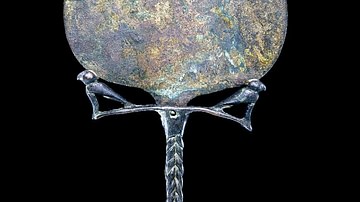Search
Remove Ads
Advertisement
Summary 
Loading AI-generated summary based on World History Encyclopedia articles ...
Search Results

Definition
Science
The term science comes from the Latin word scientia, meaning "knowledge". It can be defined as a systematic attempt to discover, by means of observation and reasoning, particular facts about the world, and to establish laws connecting facts...

Article
Index of Prohibited Books
The Index of Prohibited Books (Index Librorum Prohibitorum) was a list of written works condemned as heretical or injurious to the Christian faith by the Catholic Church at the Council of Trent in 1563. It remained in effect until 1966 when...

Definition
Roman Science
The Romans assimilated earlier Greek science for their own purposes, evaluating and then accepting or rejecting that which was most useful, much as they did in other fields such as warfare, art, and theatre. This assimilation of Greek thought...

Article
12 Best Historical Fiction Books to Read
The AHE team live and breathe history, but we all have our favourite historical periods and authors. We thought it would be fun for each of us to nominate one or two books that we would recommend for the general reader as well as high school...

Definition
Ancient Greek Science
Ancient Greek science is a modern term for the application of systematic inquiry into the individual, the world, and the universe, which began in Ionia in the 6th century BCE with Thales of Miletus (l. c. 585 BCE) and continued through the...

Definition
Mesopotamian Science and Technology
Mesopotamian science and technology developed during the Uruk Period (4100-2900 BCE) and Early Dynastic Period (2900-1750 BCE) of the Sumerian culture of southern Mesopotamia. The foundation of future Mesopotamian advances in scientific/technological...

Article
Ancient Egyptian Science & Technology
The great temples and monuments of ancient Egypt continue to fascinate and amaze people in the modern day. The sheer size and scope of structures like the Great Pyramid at Giza or the Temple of Amun at Karnak or the Colossi of Memnon are...

Video
Cradles of Civilization - Babylonian Math
In the sixth segment of Dr. Neiman's second lecture, he reviews Babylonian advances in astronomy and mathematics. He also credits the Babylonians with devising some of civilization's most basic concepts: dividing the circle into 360 degrees...

Video
Da Vinci's Vitruvian Man of Math - James Earle
What's so special about Leonardo da Vinci's Vitruvian Man? With arms outstretched, the man fills the irreconcilable spaces of a circle and a square — symbolizing the Renaissance-era belief in the mutable nature of humankind. James Earle explains...

Image
Pages from Serlio's Seven Books on Architecture
Pages from 'Seven Books on Architecture' by the Italian Renaissance architect Sebastiano Serlio (c. 1475-1554 CE). 1551-1554 CE. (Bayerische Staatsbibliothek, Munich)